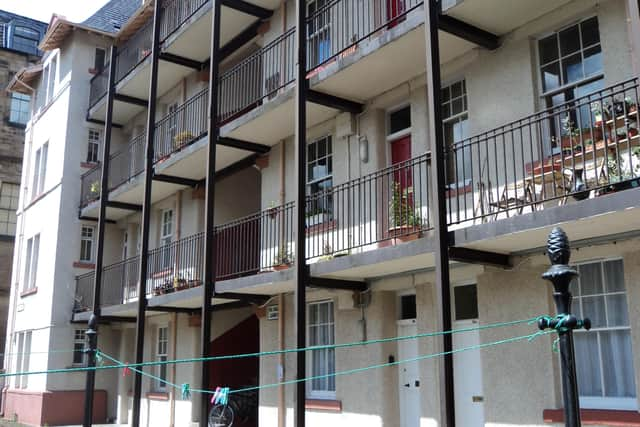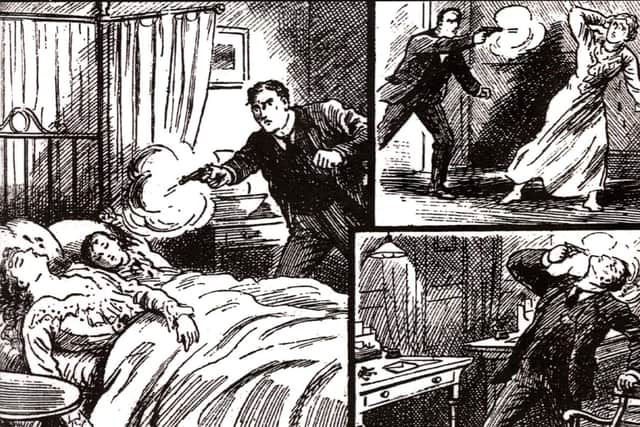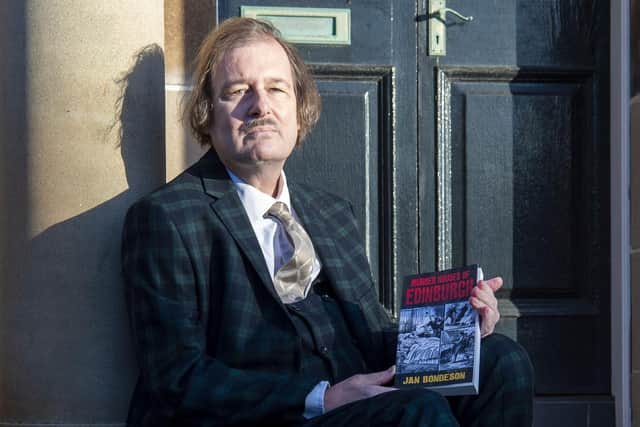Murder Houses of Edinburgh, by Jan Bondeson, part two, The Curse on Tron Square, 1954


Her first husband, George Alexander Robertson, a veteran of the Spanish Civil War, was violent, abusive and intensely jealous; her second husband had left her after just a few months. Her 18-year-old son George Jr worked as a coal porter and would soon be called up for his national service; her 16-year-old daughter Jean had a job at a paper mill. For a while, Elizabeth allowed Robertson back into the house, but he turned out to be as mean-spirited and vindictive as ever, so she showed him the door in February 1954.
Since the family was fearful that the vicious Robertson would return to beat them up, they kept the door locked at all times, with a chair wedged against the handle for extra protection.
Advertisement
Hide AdAdvertisement
Hide AdOn February 28 1954, Jean came home from a dance, to find that her mother had invited a few friends to 57 Tron Square for a sing-song. They had a jolly time, and George Jr later came home to join them. For once, they forgot to wedge the chair against the door handle when they went to bed.


In the middle of the night, Jean awoke with a start when she could hear her father’s voice inside the flat. George Jr also woke up and got out of bed, but only to be stabbed in the head by his father who then attacked Jean and stabbed her in the stomach and arms with two large knives. When he heard his ex-wife try to escape through the door, he ran after her, stabbing her hard several times. He dragged her inside the flat, where the terrified children saw that her hands were tied together and that she had a white handkerchief stuffed into her mouth; her body was drenched with blood, and there was a gaping hole in her stomach.
As the murderous Robertson threw the lifeless body of his wife onto the kitchen floor, George Jr made a desperate bid for freedom, running out of the flat and along the first-floor balcony until he reached the quadrangle outside. Throwing himself headlong through a neighbour’s kitchen window at 42 Tron Square, he screamed ‘Help me! Please will someone help!’
This neighbour was Mrs Catherine Hay, who got the shock of her life when the badly bleeding George Jr came lurching into the bedroom that she shared with her husband and children. Robertson, who had also leapt in through the window, viciously attacked his son, stabbing him hard in the face and chest. In front of the terrified Hay family, he murdered his son, promising them the same treatment if they tried to intervene, before reeling back to 57 Tron Square, carrying George Jr’s mangled corpse. Here, he surveyed the bodies of his daughter and ex-wife, before turning on the gas and putting his head inside the oven.
Advertisement
Hide AdAdvertisement
Hide AdThe terrified Hays ran to the Central Police Station, saying there had just been a murder inside their own flat. Since they were almost hysterical, Sergeant Walter Middlemist at first thought they were delirious, but when he and two constables accompanied them back to 42 Tron Square, a grisly trail of bloody footprints led up the stairs to 57 Tron Square, where the policemen pulled the unconscious Robertson’s head out of the oven.


Elizabeth was dead and so was the badly mangled George Jr, but Jean was still alive in spite of her appalling injuries; she was swiftly taken to the Royal Infirmary, where an emergency operation saved her life.
‘Tragedy in Royal Mile!’ exclaimed the Edinburgh Evening News, whose photographer took some helpful snapshots of the murder flat, the second one from the right along the first floor balcony, and the bloody footprints leading to it.
On trial for murder at the High Court of Edinburgh in early June 1954, Robertson looked defiant, like he was proud of nearly exterminating his entire family. He had left a note with his old mother saying that Liz had provoked him for the last time, and that he would take action against her. Jean, who had recovered from her injuries, gave a blow-by-blow account of the Tron Square bloodbath together with Catherine Hay.
Advertisement
Hide AdAdvertisement
Hide AdSir David Kennedy Henderson, professor of psychiatry at Edinburgh University, testified that he had interviewed the prisoner and found no sign of mental unsoundness. Mr Sloan, for the defence, suggested that there might have been an acute brainstorm, so that he had not been responsible for his actions, but the polite expert witness replied that although he would have liked to come to that opinion, he was sorry that he was unable to do so.
The Solicitor-General Mr Milligan, for the prosecution, pointed out that the attack had clearly been premeditated, since Robertson had brought two large knives with him on his nocturnal visit to 57 Tron Square. Two doctors had found no signs of psychiatric disease. The extraordinary horror of the attack did not imply mental abnormality. Lord Thomson pointed out that if the prisoner had been mentally sound at the time, this was a case of murder, whereas if there was diminished responsibility, this was culpable homicide.
The jury found Robertson guilty of murder and Lord Thomson sentenced him to death; he was executed, as the last person ever, at Saughton Prison on June 23 1954.
Between 2001 and 2003, Tron Square was tidied up and 60 modern flats constructed; the houses were renumbered but it is still possible to follow George Jr’s final run from one murder flat to another, due to the helpful Edinburgh Evening News photographs.
Tomorrow: The Second Oldest Murder House in Edinburgh
Advertisement
Hide AdAdvertisement
Hide AdThe Murder Houses of Edinburgh, by Jan Bondeson is now available here